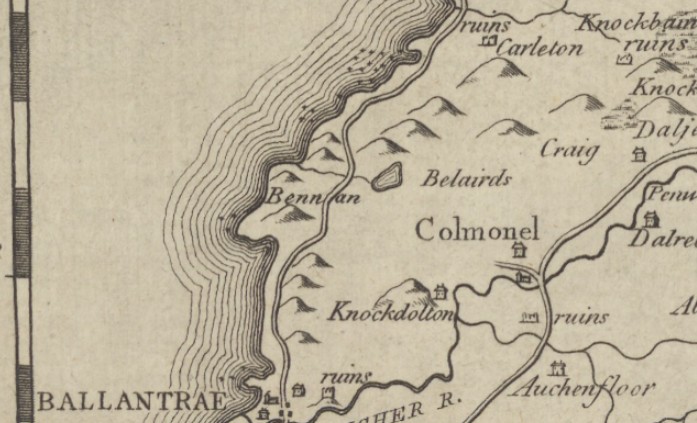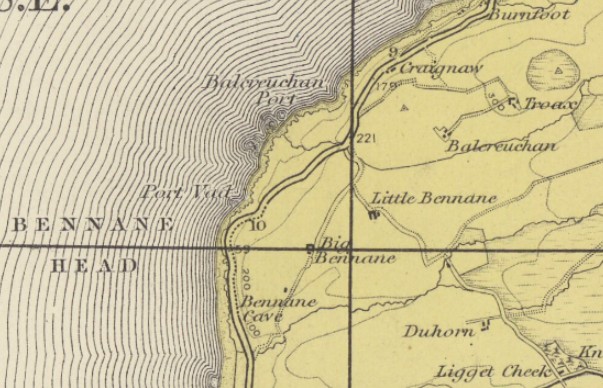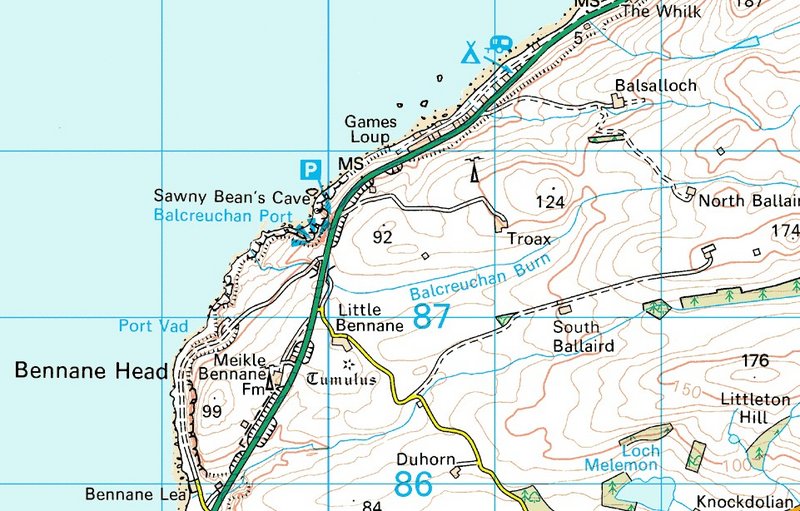Frideswide
Fortea Morgana :) PeteByrdie certificated Princess
- Joined
- Jul 14, 2014
- Messages
- 16,310
- Location
- An Eochair
feral haggis
it's like Salmon - the wild ones are sweetest of all
feral haggis
Apart from the brown tourist sign, it isn't really. It's all about Burns and golf round my neck of the woods.Having spent some time in Ayrshire, l’m surprised that Sawney, his antics notwithstanding, is regarded as enough of an outlier to warrant being treated as a tourist attraction.
maximus otter
Apart from the brown tourist sign, it isn't really. It's all about Burns and golf round my neck of the woods.
Well, like Sawney he had plenty of children.Just start a rumour that Rabbie was a cannibal golfer.

I have travelled it umpteen times. Usually in car or a football supporters'bus. Not always straight and hilly at times, but nothing too foreboding. But I've never broken down.....So has anyone travelled the road between Girvan and Ballantrae? Sawney Beane's alleged territory?
But I've never broken down.....
and as far as I know, we've never met!
Well have you stopped eating passers-by at least? Covid-19 is going to immeasurably reduce your diet.Many times. And there's something wild and dangerous out there. Fortunately it's me!
Well have you stopped eating passers-by at least? Covid-19 is going to immeasurably reduce your diet.

...According to Ronald Holmes, in his book The Legend of Sawney Bean (bought from a book fair many years back) the original published story appeared in broadsheet form around 1700. However, Holmes' book was published in 1974 - so his research may have been superseded by now.
Has anyone got any proven references for this myth even being ancient?
Has anyone got any proven references for this myth even being ancient? I've been highly interested in mysteries and such since the mid 60's and I had never heard of Sawney Beane anywhere until the mid 70's. Has it been backdated? Has anyone seen any original sources that can be proved to go back centuries? Or is it conceivable it's just a particularly good hoax?



 ) hits us between the eyes:
) hits us between the eyes:
Are other caves and sites of interest marked?
One of the maps has a different cave marked, the one you point out above, so I see the absence of the SB cave as interesting.
The others don't. So there may be a blanket reason why there are no caves, rather than anything to do with the SB cave in particular.
Not unless you've ever frequented The Grapes in Stranraer. Then there is a fairly remote possibility.
I'm sure it was never really forgotten in parts of Ayrshire or Wigtownshire.
